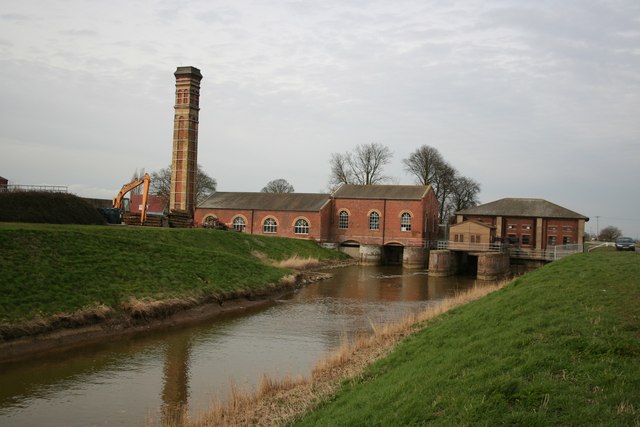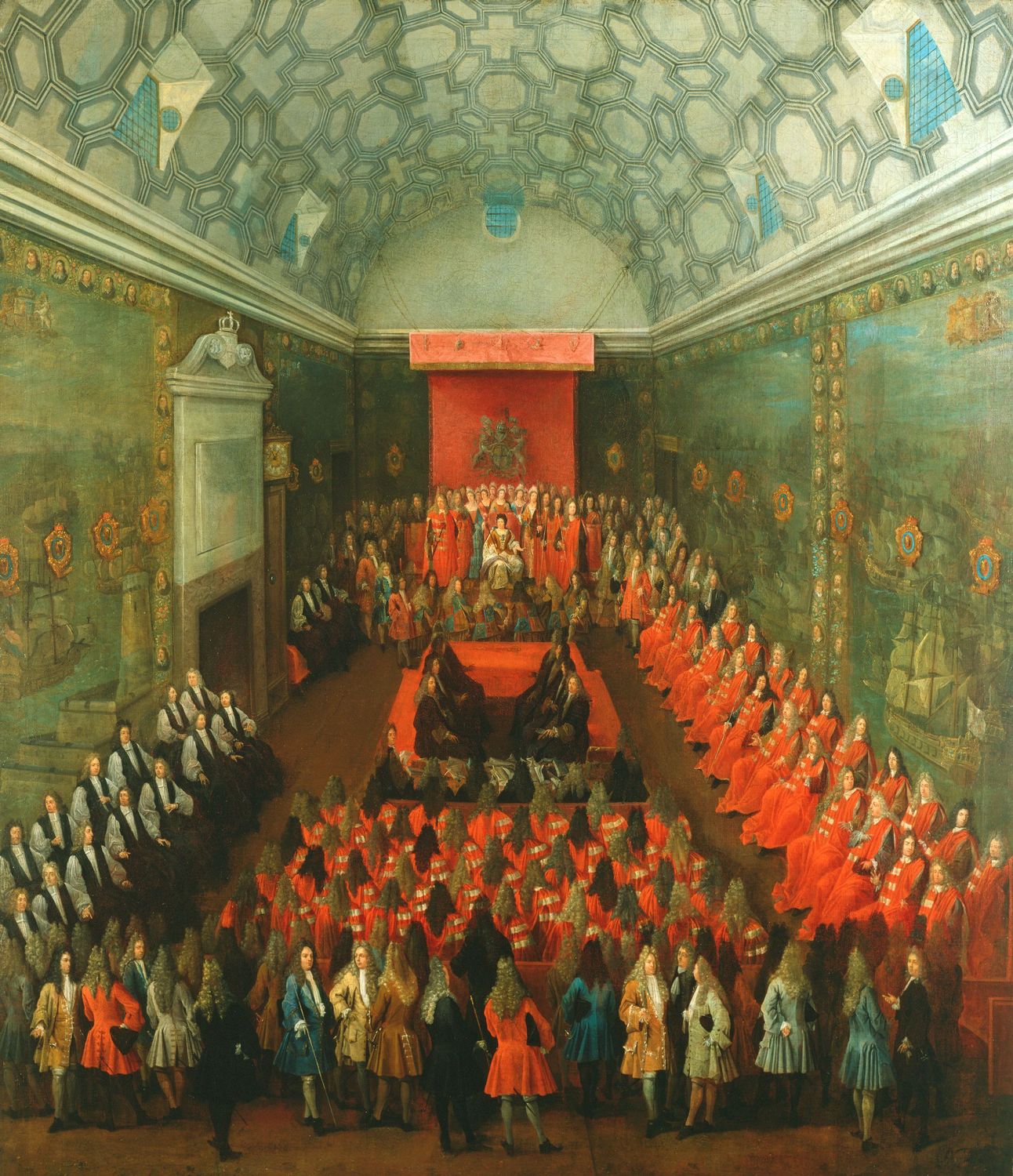|
Witham Navigable Drains
The Witham Navigable Drains are located in Lincolnshire, England, and are part of a much larger drainage system managed by the Witham Fourth District Internal Drainage Board. The Witham Fourth District comprises the East Fen and West Fen, to the north of Boston, which together cover an area of . In total there are over of drainage ditches, of which under are navigable. Navigation is normally only possible in the summer months, as the drains are maintained at a lower level in winter, and are subject to sudden changes in level as a result of their primary drainage function, which can leave boats stranded. Access to the drains is from the River Witham at Anton's Gowt Lock. The area is bounded by the River Witham to the south and west, and the Steeping River to the north. Since the 11th century, there have been attempts to prevent the fens from flooding, so that they could be used for agriculture. A major advance was made in the seventeenth century, when Adventurers built drains ... [...More Info...] [...Related Items...] OR: [Wikipedia] [Google] [Baidu] |
Anton's Gowt
__NOTOC__ Anton's Gowt is a hamlet in the East Lindsey district of Lincolnshire, England. It is situated approximately north-west from the market town and port of Boston. It is the most southerly village within the East Lindsey district. History Anton's Gowt is in an area once known as Wildmore Fen. It's believed that the lock, and from it the hamlet, were named after Sir Anthony Thomas, one of a group of people who helped drain the Witham Fens from 1631 onwards. The word 'Gowt' is on old term for "A water-pipe under the ground. A sewer. A flood-gate, through which the marsh-water runs from the reens into the sea." A Primitive Methodist chapel was built by the Doughty family in 1852, but is no longer in evidence. Its centenary was held in June 1952, in the carpenter's shop of the Burn family, and the service was conducted by a Mr H. Doughty of Lincoln who was 95 years old. The chapel closed in 1964, when it still had 18 Sunday school scholars. A loop line of the Great ... [...More Info...] [...Related Items...] OR: [Wikipedia] [Google] [Baidu] |
Stickford
Stickford is a village and civil parish in the East Lindsey district of Lincolnshire, England. The village is situated near the A16 road and approximately south-west from the town of Spilsby. In 2011 the parish had a population of 497. History Stickford is first recorded in the Domesday Book of 1086, where it appears as ''Stichesforde'', meaning 'stick ford' (cf. the nearby Stickney). Stickford church is dedicated to Saint Helen and is a Grade II* listed building. It dates from the 13th century although it has been much restored. Stickford County Primary School finally closed in 1987. It had opened as a National School in 1846, and was a Board School between 1872 and 1903 when those were abolished. Shaws Windmill is a three-storey red-brick tower mill A tower mill is a type of vertical windmill consisting of a brick or stone tower, on which sits a wooden 'cap' or roof, which can rotate to bring the sails into the wind.Medieval science, technology, and medicine: an ency ... [...More Info...] [...Related Items...] OR: [Wikipedia] [Google] [Baidu] |
House Of Commons Of The United Kingdom
The House of Commons is the lower house of the Parliament of the United Kingdom. Like the upper house, the House of Lords, it meets in the Palace of Westminster in London, England. The House of Commons is an elected body consisting of 650 members known as Member of Parliament (United Kingdom), members of Parliament (MPs), who are elected to represent United Kingdom constituencies, constituencies by the First-past-the-post voting, first-past-the-post system and hold their seats until Dissolution of the Parliament of the United Kingdom, Parliament is dissolved. The House of Commons of England began to evolve in the 13th and 14th centuries. In 1707 it became the House of Commons of Great Britain after the Acts of Union 1707, political union with Scotland, and from 1801 it also became the House of Commons for Ireland after the Acts of Union 1800, political union of Great Britain and Ireland. In 1922, the body became the House of Commons of the United Kingdom of Great Britain and No ... [...More Info...] [...Related Items...] OR: [Wikipedia] [Google] [Baidu] |
House Of Lords Of The United Kingdom
The House of Lords is the upper house of the Parliament of the United Kingdom. Like the lower house, the House of Commons, it meets in the Palace of Westminster in London, England. One of the oldest extant institutions in the world, its origins lie in the early 11th century and the emergence of bicameralism in the 13th century. In contrast to the House of Commons, membership of the Lords is not generally acquired by election. Most members are appointed for life, on either a political or non-political basis. Hereditary membership was limited in 1999 to 92 excepted hereditary peers: 90 elected through internal by-elections, plus the Earl Marshal and Lord Great Chamberlain as members ''ex officio''. No members directly inherit their seats any longer. The House of Lords also includes up to 26 archbishops and bishops of the Church of England, known as Lords Spiritual. Since 2014, membership may be voluntarily relinquished or terminated upon expulsion. As the upper house of ... [...More Info...] [...Related Items...] OR: [Wikipedia] [Google] [Baidu] |
The Haven, Boston
The Haven is the tidal river of the port of Boston, Lincolnshire in England. It provides access for shipping between Boston Deeps in The Wash and the town, particularly, the dock. It also serves as the outfall into the sea of the River Witham and of several major land drains of the northern Fens of eastern England, which are known collectively as the Witham Navigable Drains. History Boston did not exist as a settlement prior to 1086, not being mentioned in Domesday Book. At the time, it was probably an un-named hamlet to the west of the larger settlement of Skirbeck, for which there were two churches recorded and two priests. One would have been St Nicholas's in Skirbeck itself, and the other was probably St Botolph's, by which name the early settlement at Boston became known. The settlement grew rapidly during the 11th, 12th and 13th centuries, as it lay between the city of Lincoln and the North Sea. Wool and corn were shipped down the River Witham, and Boston's location on ... [...More Info...] [...Related Items...] OR: [Wikipedia] [Google] [Baidu] |
Wainfleet Haven
The River Lymn is a river in Lincolnshire, England. It rises in the Wolds on the eastern slope of Castcliffe Hill in Fulletby parish. It flows south-eastwards to the Lincolnshire Marsh, where it becomes known as the Steeping River on the boundary of Great Steeping parish. The main channel is supplemented by the Wainfleet Relief Channel as it passes Wainfleet All Saints, and the relief channel is joined by the old course of the Lymn. Once the two channels rejoin, there are three flood defence structures to protect the region from flooding by the North Sea. Route The river rises on the southern slope of Belchford Hill, to the east of Belchford and close to the contour. It flows to the south and then to the east to reach Tetford,Ordnance Survey, 1:25,000 map where there is a grade II listed water mill and mill house. It was built in the late eighteenth century, but shows evidence that it was built around an earlier structure. The much-repaired water wheel, dating from the ... [...More Info...] [...Related Items...] OR: [Wikipedia] [Google] [Baidu] |
Duchy Of Lancaster
The Duchy of Lancaster is an estate of the British sovereign. The estate has its origins in the lands held by the medieval Dukes of Lancaster, which came under the direct control of the monarch when Henry Bolingbroke, the then duke of Lancaster, ascended the throne in 1399. In 1461 King Edward IV confirmed that the Duchy would be inherited by the monarch, but held separately from the Crown Estate, the other assets which belong to the monarch. The Duchy consists of a portfolio of lands, properties, and assets held in trust for the sovereign. The principal purpose of the estate is to provide a source of independent income. The Duchy consists of of land holdings, including rural estates and farmland, urban developments, historic buildings, and commercial properties across England and Wales, particularly in Cheshire, Staffordshire, Derbyshire, Lincolnshire, Yorkshire, Lancashire, and the Savoy Estate in London. As of the financial year ending 31 March 2022, the estate was va ... [...More Info...] [...Related Items...] OR: [Wikipedia] [Google] [Baidu] |
Common Land
Common land is collective land (sometimes only open to those whose nation governs the land) in which all persons have certain common rights, such as to allow their livestock to graze upon it, to collect wood, or to cut turf for fuel. A person who has a right in, or over, common land jointly with another or others is usually called a commoner. In Great Britain, common land or former common land is usually referred to as a common; for instance, Clapham Common and Mungrisdale Common. Due to enclosure, the extent of common land is now much reduced from the hundreds of square kilometres that existed until the 17th century, but a considerable amount of common land still exists, particularly in upland areas. There are over 8,000 registered commons in England alone. Origins Originally in medieval England the common was an integral part of the manor, and was thus part of the estate held by the lord of the manor under a grant from the Crown or a superior peer (who in turn held hi ... [...More Info...] [...Related Items...] OR: [Wikipedia] [Google] [Baidu] |




